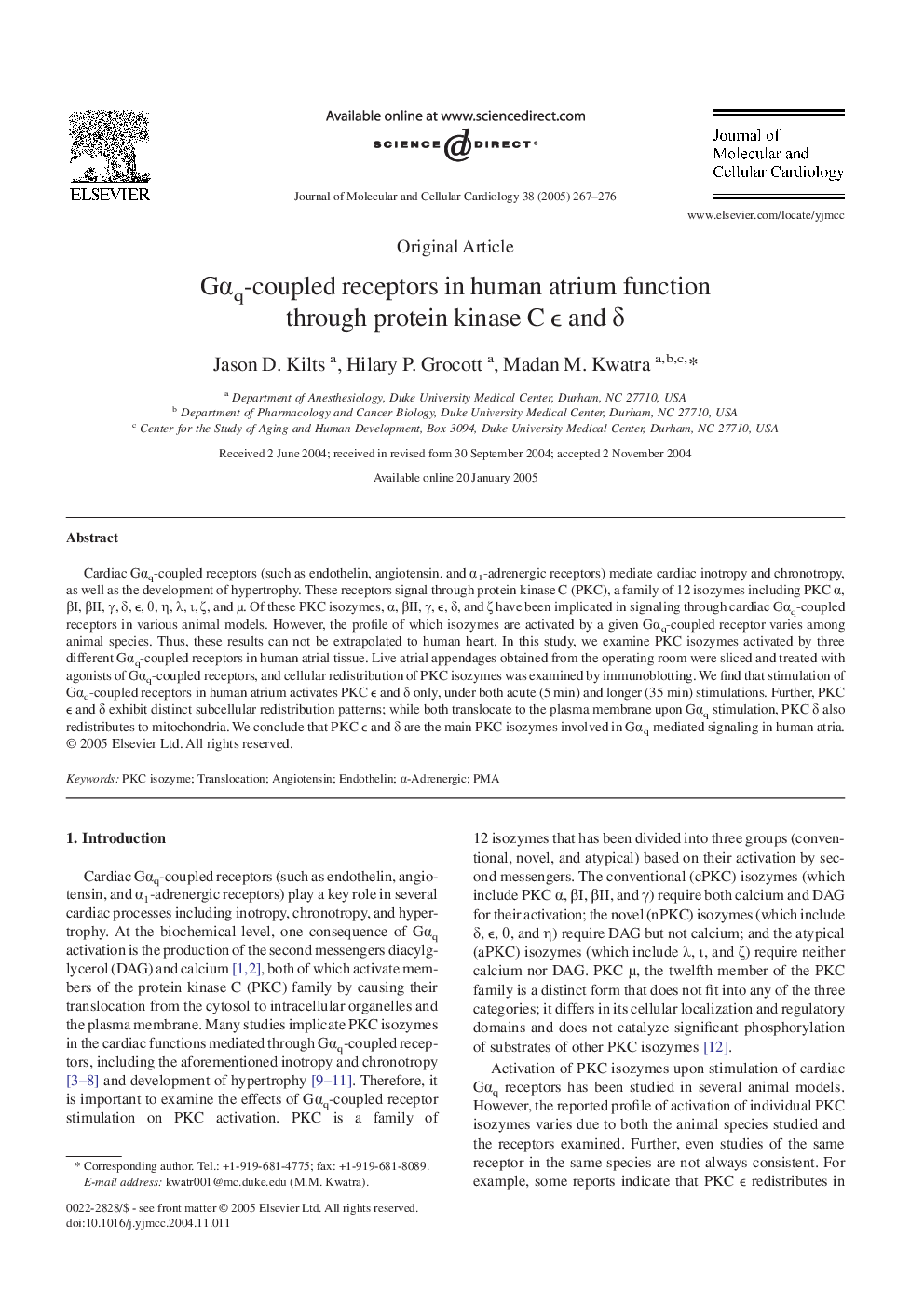| Article ID | Journal | Published Year | Pages | File Type |
|---|---|---|---|---|
| 10954442 | Journal of Molecular and Cellular Cardiology | 2005 | 10 Pages |
Abstract
Cardiac Gαq-coupled receptors (such as endothelin, angiotensin, and α1-adrenergic receptors) mediate cardiac inotropy and chronotropy, as well as the development of hypertrophy. These receptors signal through protein kinase C (PKC), a family of 12 isozymes including PKC α, βI, βII, γ, δ, ε, θ, η, λ, ι, ζ, and μ. Of these PKC isozymes, α, βII, γ, ε, δ, and ζ have been implicated in signaling through cardiac Gαq-coupled receptors in various animal models. However, the profile of which isozymes are activated by a given Gαq-coupled receptor varies among animal species. Thus, these results can not be extrapolated to human heart. In this study, we examine PKC isozymes activated by three different Gαq-coupled receptors in human atrial tissue. Live atrial appendages obtained from the operating room were sliced and treated with agonists of Gαq-coupled receptors, and cellular redistribution of PKC isozymes was examined by immunoblotting. We find that stimulation of Gαq-coupled receptors in human atrium activates PKC ε and δ only, under both acute (5 min) and longer (35 min) stimulations. Further, PKC ε and δ exhibit distinct subcellular redistribution patterns; while both translocate to the plasma membrane upon Gαq stimulation, PKC δ also redistributes to mitochondria. We conclude that PKC ε and δ are the main PKC isozymes involved in Gαq-mediated signaling in human atria.
Related Topics
Life Sciences
Biochemistry, Genetics and Molecular Biology
Cell Biology
Authors
Jason D. Kilts, Hilary P. Grocott, Madan M. Kwatra,
